Plug and Charge: The best charging experience for you
How can you charge your electric car without RFID cards? When purchasing a home EV charger from an EV charging wholesaler, several RFID cards will be given out to enable or terminate charging processes. Should you happen to leave these RFID cards behind when leaving home or lose them later on, charging will become difficult or even impossible.
If you purchase an ISO 15118-compliant EV charger, all this changes. Instead of carrying around RFID cards and mobile phones for each charging session, simply connect the charging port of the EV charger directly to your EV and its charging will begin instantly – yes it is that simple.
Implementation of ISO 15118 can increase intelligence, efficiency, and safety when charging electric vehicles at home EV charging solutions.
ISO 15118 is an international standard that specifies how electric vehicles interact with charging infrastructure, including authentication and authorization processes, charging parameter interactions, and so forth.
ISO 15118 supports the Plug and Charge feature, which allows EVs to be automatically authenticated and authorized when connected to charging plugs. This streamlines EV charging processes by eliminating manual authentication steps and making the use of charging devices simpler for users.
What Are the Differences Between ISO 15118 and ISO 14443?
ISO 15118 and 14443 are two international standards that cover the charging and Near-Field communications (NFC) of electric vehicles.
ISO 15118 addresses charging communications for electric vehicles. It offers a standardized way of providing secure, efficient, and intelligent communications between electric cars and charging devices in order to facilitate smart charging, authentication, and battery management.
ISO 14443 addresses NFC technology by outlining communication protocols between RF tags and read-write devices. It is widely used for contactless payments, identity verification, access control systems, and more. Furthermore, this standard also contains technical specifications to facilitate data transmission between devices over short distances; specifically, it defines communication protocols between physical and data link layers between RF tags and read-write devices.
RFID (radio-frequency identification) cards are widely used in charging solutions at home and work. By simply placing the card in the “swipe zone”, the user is identified. This makes charging electric vehicles much easier.
What are the advantages of Plug & Charge?
Plug and Charge improves the convenience, efficiency, and safety of charging and reduces the number of steps involved in charging an EV. Here are four key benefits of Plug and Charge:
1. No cards or apps required:
Plug and Charge simplifies the charging process by eliminating the need to carry an RFID card or use a mobile app for authentication and payment. Instead, simply plugging in the charging plug allows the system to authenticate and pay directly. This charging method makes charging EVs easier.
2. Improved user-friendliness:
This feature greatly enhances the user-friendliness of EV charging, removing the need for users to worry about complicated authentication and payment processes.
3. Avoid wasted time:
Plug and Play simplifies the charging process by eliminating the need for users to manually authenticate and pay. This means drivers unfamiliar with charging stations no longer need to waste their time exploring them.
4. Enhanced security:
Plug and Play improves charging security by automating the authentication and payment process. In addition, this secure communication protocol ensures reliable transactions while protecting the confidentiality of user data.
How Can I Use the Plug & Charge Version of an EV Charger?
Plug & Charge makes using an EV charger simple, straightforward, and straightforward. Once connected to the charging device, users simply insert their vehicle’s plug and allow the system to authenticate, pay, and initiate charging without additional cards, apps, or manual steps required – this streamlines charging efficiency while improving user maneuvers and making the charging experience more seamless and intuitive – for example when used on Joint EVC10 commercial EV charger as an example:
1. Connect the Charging Connector:
Insert the charging connector plug securely into the EV’s charging socket for optimal charging performance. Ensure it remains connected for consistent, safe charging.
2. Charging Process:
As soon as the plug is connected and inserted, a green “CHARGE” light will flash on and indicate that charging has begun; for jointEVC10s with three lights—blue light, green light, and red light – this indicates the charging process has started and that system monitoring the charging status in real-time during the charging process will monitor real-time status reports on charging process statuses during the process.
3. Troubleshooting:
When the red light (FAULT) illuminates during charging, this indicates a problem. To rectify it, reinsert your vehicle connector; if that does not solve it, then consult the “Error and Warning Messages” guide of the device for additional assistance in troubleshooting.
4. Charge is Completed:
Once the charging of the electric vehicle is complete, the green “CHARGE” light should stay lit. After verifying this fact, press and gently pull out the charging connector, this step ensures the plug can be pulled safely from its socket.
Joint: Offering You the Latest EV Charging Solutions
Joint is an industry leader when it comes to electric vehicle chargers, manufacturing and supplying a comprehensive selection of charging equipment and solutions to meet a range of customer needs. Their product offerings include home EV chargers, commercial DC fast chargers, dual port EV chargers, and much more to meet them all.
-
Complete Charging Solutions:
Joint stands out by offering comprehensive charging solutions for its users, including home charging solutions for individuals, car parks, workplaces, and destinations; Joint’s comprehensive charging solutions enable people to easily charge their EVs when needed wherever they may be.
-
Innovative Technology and Patents:
Joint is committed to innovation, holding over 120 patents that cover inventions (including three in the US), as well as software copyrights.
-
Global Certifications and Accreditations:
Joint has earned multiple global certifications, such as ETL, Energy Star, FCC, CE, CB UKCA TR25 ISO14001 ISO45001 Sedex Sedex Sedex EcoVadis Silver Award, among others.
-
Professional OEM and ODM Services:
Joint is proud to offer professional Original Equipment Manufacturer (OEM) and Original Design Manufacturer (ODM) services for its standard EV charging equipment as well as customized solutions tailored specifically for customer requirements.
Join offers an extensive range of EVSE (Electric Vehicle Supply Equipment), and is committed to offering innovative and high-quality services for its customers. As a trusted partner, Join offers reliable charging solutions.



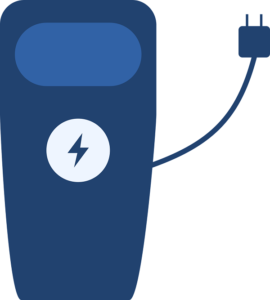
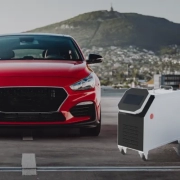
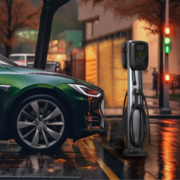
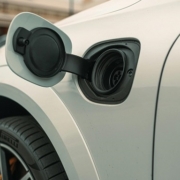
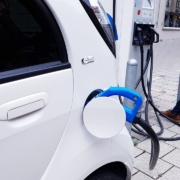
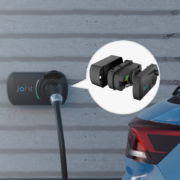


Leave a Reply
Want to join the discussion?Feel free to contribute!